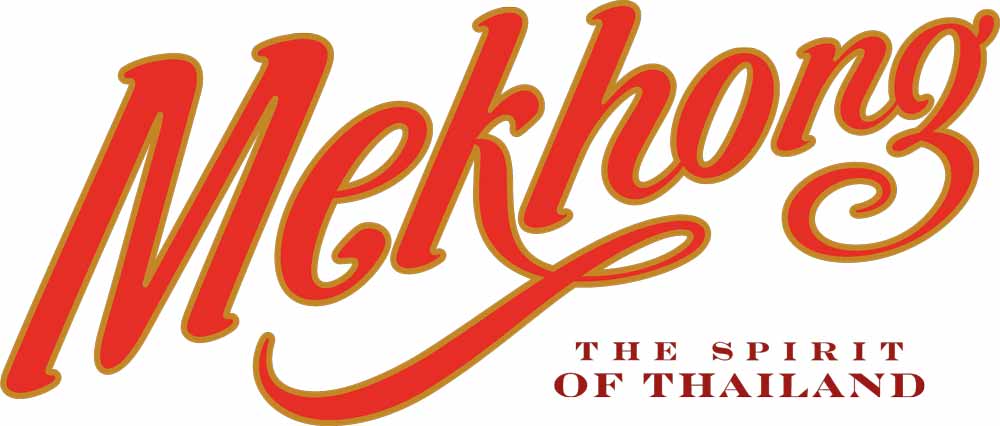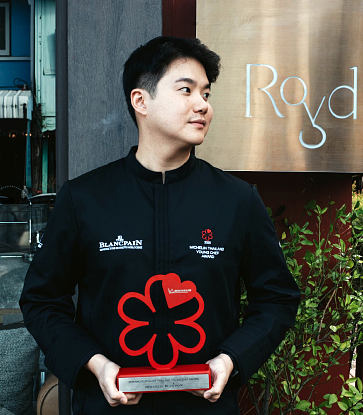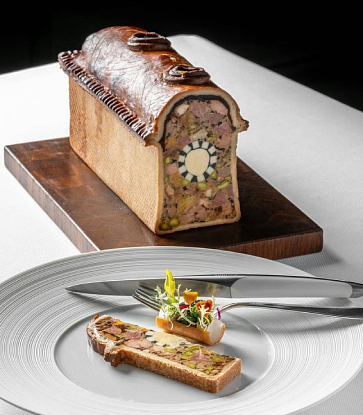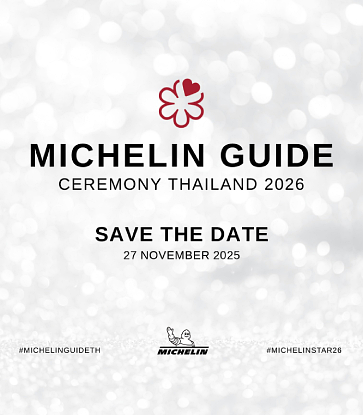When there's food on the table, there's often a beverage to be seen. You may enjoy the sophisticated sip of a gin and tonic palette cleanser or a satisfying gulp of a cold beer to wash down a spicy curry.
For fine dining, wine pairing with a tasting menu can be integral to the restaurant’s business. The sommelier could recommend a full-bodied red with dark, richer meats or a crispy white to cut through the flavours of an oily fish. Meanwhile, exotic fruit juices or fruity beers both work well with an aromatic Thai course. And the same goes with Thai rum.

A whistle-stop summary of MICHELIN Guide history
André and Édouard Michelin established their eponymous tyre company in 1889 at a time when driving was a novelty for the rich. The brothers were certain the non-horse drawn carriage would be more than a passing fad. But with fewer than 3,000 cars in the whole of France, they needed a way to encourage road travel and, in turn, boost their tyre sales.Messieurs Michelin decided to create a guidebook for motorists that mapped hotels, restaurants, mechanics and petrol stations. They released the first edition of the MICHELIN Guide over 120 years ago. In 1900, the booklet had the same blue colour as the tyre brand, and they gave away 35,000 copies for free.
As the tyre company grew, so did the Guide. The brothers expanded across Europe, publishing country-specific editions, starting with Belgium in 1904.
By 1920, the restaurant section of the Guide had become so popular that they recruited inspectors to visit and review restaurants anonymously. Six years later, they began listing restaurants by specific categories and introduced a single Star rating for the top restaurants. This expanded to the three-star system in 1931 when the cover of the Guide changed from blue to red.
In 1974, the MICHELIN Guide for Britain and Ireland was introduced. The compilation of 981 restaurants in that first edition, with 25 awarded one MICHELIN Star, had been an enormous undertaking – inspectors had visited and assessed some 15,000 restaurants and hotels over four years.
Across the Atlantic, the first American Guide wouldn’t be published until 2005. It covered 500 restaurants in the five boroughs of New York and 50 hotels in Manhattan. By 2007, Michelin’s restaurant reviews had reached Tokyo and the company had established the magazine Étoile.

In 2016, the guide series expanded to cover street food reviews for the first time, in Hong Kong and Macau, and Singapore. This paved the way for expansion into one of the most famous cities for roadside dining, Bangkok, two years later.
Even more recently, MICHELIN has surprised many by expanding to Russia, Dubai and Abu Dhabi in the Middle East, and Toronto – one of the most multicultural and multiracial cities in the world.
Steadily, over the years, the iconic red guide has diversified by restaurant type and region. The series now lists Bib Gourmand, modestly priced eateries, street food and awards Green Stars to champions of sustainability; spanning some 30 destinations and covering more than 16,300 establishments.
The business has evolved beyond print with the website and app guiding diners of all budgets, and a magazine covering lifestyle and human-interest stories from the food and beverage world.

The spirit of Thailand
Alcohol, like food, is commonly associated with cultural celebration and has been an essential ingredient of festivities for most civilisations – from as early as the Sumerians and ancient Egyptians, and throughout the globe today. In Thailand, Mekhong Thai spice rum stands out for its distinguished history that’s deeply rooted in the culture and for embodying the spirit of the country. And since 2018, MICHELIN Guide Thailand has enjoyed a fruitful partnership with Mekhong, providing a two-pronged offensive in an effort to push the boundaries of the food and beverage industry.The Thai spiced rum is widely considered to be in the elite class of premium liquors on the international stage. Fittingly, it has been designated the official souvenir of the land of smiles for decades.
Despite the prevalence of Buddhism in Thailand, alcohol consumption became common in the early Rattanakosin period (from 1782), as the proportion of Chinese migrants swelled to a quarter of the total population.

By the 1930s, European scotches, bourbons and whiskeys had begun to flood the kingdom. To counter this trade deficit, the government decided they needed to create the first authentic Thai spirit. At the same time, Thailand was locked in political conflict, demanding the return of four provinces to the east of the Mekong river from French occupation. This ultimately led to the Franco-Thai war.
In response, the government’s Fine Arts Department composed Kham Khong, a patriotic song that doggedly proclaimed the four provinces as a part of Thailand. As the song grew in popularity, it became a source of inspiration to the people. Consequently, when the Thai Excise Department released their new 35-degree special blend in 1941, they named it Mekhong.
The very first edition of Mekhong was produced in a green lemonade bottle with a cork stopper. Expertly blended with a secret recipe of natural Thai herbs and spices, it soon pleased the tastebuds of the Thai people. This was the first blended spiced spirit made by Thais for Thais. The bottles flew off the shelves providing a much-needed economic boon for the country post World War II.
The company changed the label’s colour to yellow in 2001 to improve visibility. Ten years later, it was updated to a fresh modern look, designed for a global market. The Thai favourite was now ready to hit the shelves of supermarkets and liquor stores across Europe and USA.

An unparalleled influence on cuisine and culture
It’s usually challenging to pair Asian food and alcoholic beverages. Yet, Mekhong’s unique recipe provides the perfect response to that challenge. The amber-coloured spirit gets its signature flavour from a perfect combination of red stalks, sugar and spices, including coriander seeds, lemongrass and cardamom.The versatile spirit can play the perfect complement to a refreshing cocktail that fits the tropical climate. It’s equally at home in rum, bourbon and gin-based cocktails. But however you sip it, the Spirit of Thailand is best enjoyed with its fellow native cuisine.
This year, Thailand’s favourite spirit celebrates its 80th anniversary. Like MICHELIN, it's imbued with a rich history. They have both evolved over the decades to play key roles in the food and beverage industry, exerting great influence over both economy and culture. The two brands are connected by similar ambitions, pride in their legacy, and a commitment to creating special moments where people can share, create memories and, of course, celebrate.
Illustration image: © MICHELIN Guide Thailand & Mekhong






















